
Natchez, officially the City of Natchez, is the only city in and the county seat of Adams County, Mississippi, United States. The population was 14,520 at the 2020 census. Located on the Mississippi River across from Vidalia in Concordia Parish, Louisiana, Natchez was a prominent city in the antebellum years, a center of cotton planters and Mississippi River trade.

Port Gibson is a city in Claiborne County, Mississippi, United States. The population was 1,567 at the 2010 census. Port Gibson is the county seat of Claiborne County, which is bordered on the west by the Mississippi River. It is the site of the Claiborne County Courthouse.
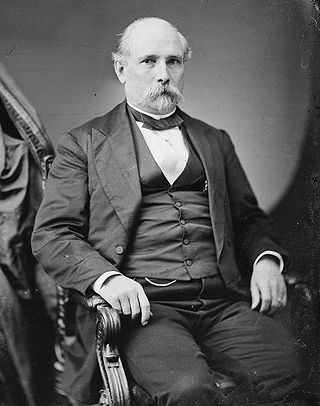
James Lusk Alcorn was a governor, and U.S. senator during the Reconstruction era in Mississippi. A Moderate Republican and Whiggish "scalawag", he engaged in a bitter rivalry with Radical Republican Adelbert Ames, who defeated him in the 1873 gubernatorial race. Alcorn was the first elected Republican governor of Mississippi.
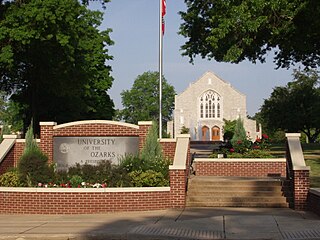
University of the Ozarks is a private university in Clarksville, Arkansas. Enrollment averages around 900 students, representing 25 countries. U of O is affiliated with the Presbyterian Church (U.S.A.).

The history of the state of Mississippi extends back to thousands of years of indigenous peoples. Evidence of their cultures has been found largely through archeological excavations, as well as existing remains of earthwork mounds built thousands of years ago. Native American traditions were kept through oral histories; with Europeans recording the accounts of historic peoples they encountered. Since the late 20th century, there have been increased studies of the Native American tribes and reliance on their oral histories to document their cultures. Their accounts have been correlated with evidence of natural events.

Mississippi-in-Africa was a colony on the Pepper Coast founded in the 1830s by the Mississippi Colonization Society of the United States and settled by American free people of color, many of them former slaves. In the late 1840s, some 300 former slaves from Prospect Hill Plantation and other Isaac Ross properties in Jefferson County, Mississippi, were the largest single group of emigrants to the new colony. Ross had freed the slaves in his will and provided for his plantation to be sold to pay for their transportation and initial costs.

Oakland Memorial Chapel is a historic church and academic building on the campus of Alcorn State University in rural southwestern Claiborne County, Mississippi. Built in 1838 as part of Oakland College, it is one of the oldest surviving buildings at Alcorn State, which took over that defunct school's campus after the American Civil War. Alcorn State was the first land grant university established specifically for the education of African Americans. The chapel was designated a National Historic Landmark in 1976, and was designated a Mississippi Landmark in 1985.

David Ker, born in northern Ireland, was a minister, educator, lawyer and judge, the first presiding professor of the University of North Carolina.

Chamberlain-Hunt Academy was a boarding school in Port Gibson, Mississippi. The school was founded in 1830 as Oakland College and closed in 2014.
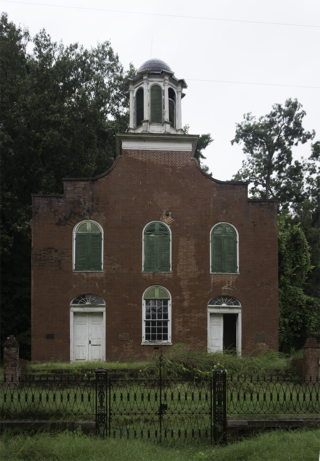
Rodney Presbyterian Church is a historic church in Alcorn, Mississippi, United States.

Plantation complexes were common on agricultural plantations in the Southern United States from the 17th into the 20th century. The complex included everything from the main residence down to the pens for livestock. Until the abolition of slavery, such plantations were generally self-sufficient settlements that relied on the forced labor of enslaved people.

Stephen Duncan was an American planter and banker in Mississippi. He was born and studied medicine in Pennsylvania, but moved to Natchez District, Mississippi Territory in 1808 and became the wealthiest cotton planter and the second-largest slave owner in the United States with over 2,200 slaves. He owned 15 cotton and sugar plantations, served as President of the Bank of Mississippi, and held major investments in railroads and lumber.
Isaac Ross was an American Revolutionary War veteran and planter from South Carolina who developed Prospect Hill Plantation in Jefferson County, Mississippi, for cotton cultivation. He owned thousands of acres and nearly 160 slaves by 1820.
Jeremiah Chamberlain (1794–1851) was an American Presbyterian minister, educator and college administrator. Educated at Dickinson College and Princeton Theological Seminary, he served as the president of Centre College in Kentucky from 1822 to 1825.

Edward McGehee was an American judge and major planter in Wilkinson County, Mississippi. He owned nearly 1,000 slaves to work his thousands of acres of cotton land at his Bowling Green Plantation.
John Ker (1789–1850) was an American surgeon, planter, and politician in Louisiana. Together with several major Mississippi planters, in the 1830s Ker co-founded the Mississippi Colonization Society (MCS), promoting the removal of free people of color to a colony in West Africa. The MCS modeled itself after the American Colonization Society, the national organization for which Ker later served as a vice president.

David Hunt was an American planter based in the Natchez District of Mississippi. From New Jersey in approximately 1800, he took a job in his uncle Abijah Hunt's Mississippi business. After his uncle's untimely 1811 death, as a benefeciary and as the executor of the estate, he began to convert the estate into his plantation empire. By the time of the 1860 slave census, Hunt owned close to 800 slaves. This was after ensuring that each of his five adult children had at least one plantation and had an approximate minimum of 100 slaves apiece. In fact, Hunt and his five adult children and their spouses owned some 1,700 slaves by 1860. He became a major philanthropist in the South, contributing to educational institutions in Mississippi, as well as the American Colonization Society and Mississippi Colonization Society, the latter of which he was a founding member.
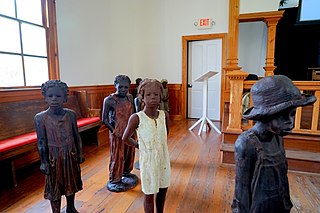
Following Robert Cavelier de La Salle establishing the French claim to the territory and the introduction of the name Louisiana, the first settlements in the southernmost portion of Louisiana were developed at present-day Biloxi (1699), Mobile (1702), Natchitoches (1714), and New Orleans (1718). Slavery was then established by European colonists.
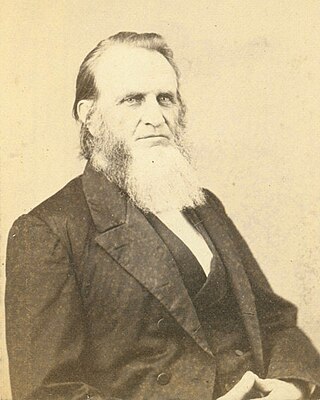
William Lewis Breckinridge was an American pastor and educator. The son of Senator John Breckinridge, he was born near Lexington, Kentucky, and attended college at Transylvania University. Early in his career, he became an emancipationist, and he entered academia in 1831 when he began teaching ancient languages at Centre College in Danville, Kentucky. He was pastor of the First Presbyterian Church in Louisville, Kentucky, from 1836 to 1858, and was moderator of the 1859 Presbyterian Church General Assembly. He was president of Oakland College near Rodney, Mississippi, for one year prior to the outbreak of the Civil War, and afterwards he spent five years as president of Centre College.

















